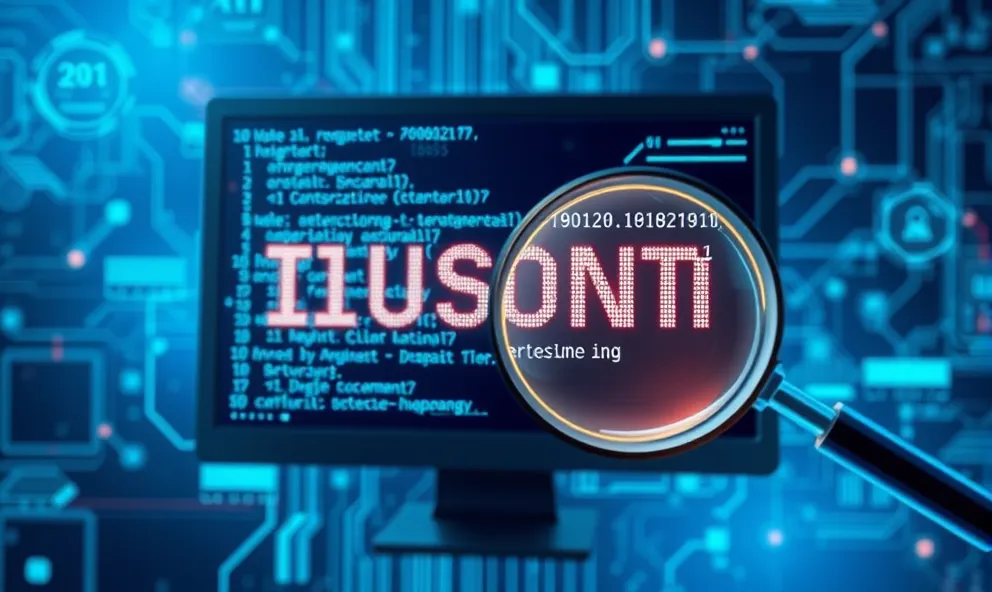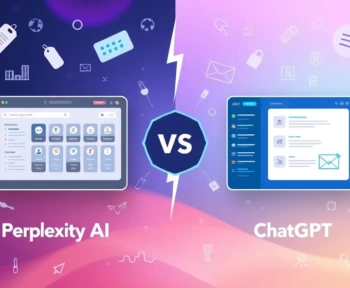We are living in 2025, and if we look at today, detecting AI-generated content is becoming too important. Have you thought about it? Why is it getting important? Because of AI, artificial intelligence. Whether you are a teacher, a business professional, or a content creator, ensuring that your content is not generated by AI can be essential for maintaining authenticity and credibility.
In this content blog post, we will learn about top free AI content detectors and more such tools that will help in catching any AI-written text. You can even protect the integrity of your content. But you have to make use of all such tools to achieve it.
These AI content detector tools make sure that whatever content you’re providing and publishing is completely human-written. The best part? It can be done by identifying the AI-written content also.
Table of Contents
Top AI Content Detectors Tools to Detect Any AI-Generated Content
1. Copyleaks

Copyleaks is a free AI content detector. When it comes to identifying both plagiarism and AI-generated content, one of the tools that stands out is Copyleaks. It’s a strong AI content detector that scans across various file formats like Word, PDF, and even online sources. This tool doesn’t just check for plagiarism but also offers an AI-generated text detector to assess whether content is created by machines like GPT-3 or GPT-4.
Features:
- It easily detects both AI-generated content and plagiarism in over 30 languages.
- Copyleaks provides real-time alerts when AI-generated content is identified.
- It can scan multiple file formats, including PDFs and Word documents.
- Smoothly integrates via API for easy and automated content checks.
2. Turnitin

There are many other paid AI content detectors, but Turnitin is known to be one of the most trusted. If you need an AI content detector tool, especially for academic purposes, then it is the one. Not just this, the tool also has plagiarism detection features in it. Plus, Turnitin also got the capability to catch and identify AI-written content as well. With its vast database and sophisticated algorithms, Turnitin can now easily catch the difference between human-written and AI-generated text.
Features:
- Known for its detection of AI-generated text by analyzing writing patterns and structures.
- It can offer you detailed information on citation usage and paraphrasing.
- Also, it supports integration with learning management systems like Canvas and Moodle.
Don’t Miss: Rytr Alternatives
3. GPTZero
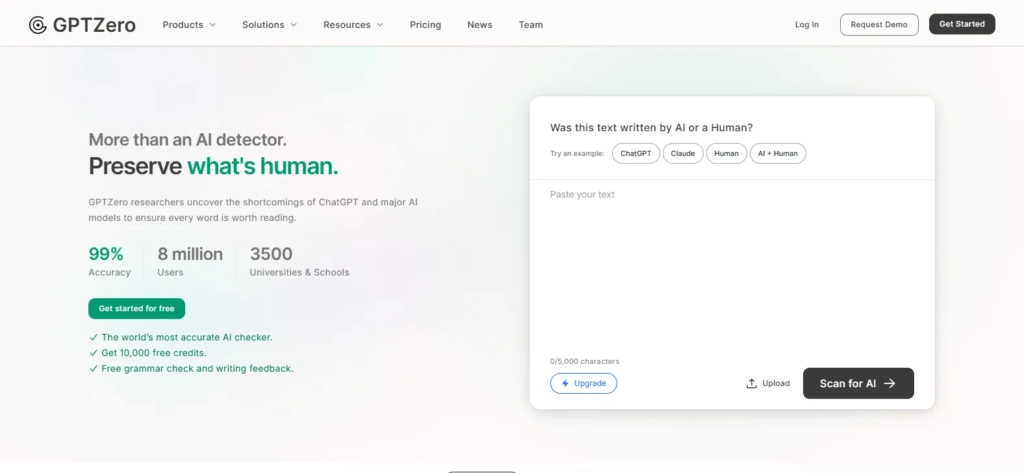
Looking for a free AI content detector to check if text is AI-generated? GPTZero is a great choice. It’s designed to detect AI-written content, specifically from models like GPT-3 and GPT-4. It’s popular with educators and content creators for its ease of use and accuracy.
Features:
- Free tool for short and medium-length texts.
- Provides a probability score for AI detection.
- Evaluates text consistency to highlight unusual writing behavior.
4. Writer
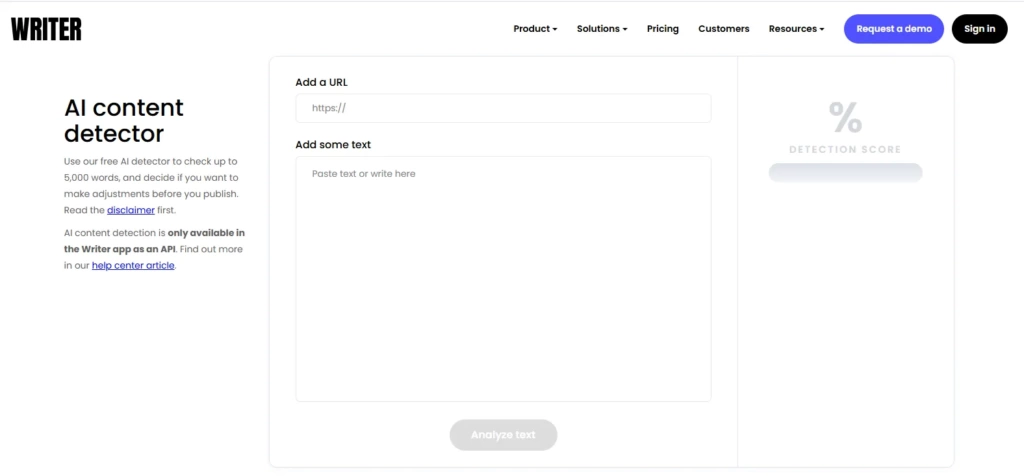
Writer is a fast and effective AI content detector tool. It helps businesses and educational institutions spot AI-generated text. This tool analyzes writing to distinguish between human-written and machine-written content.
Features:
- Flags AI-generated content by identifying unnatural writing patterns.
- Provides detailed reports showing which sections are AI-generated.
- Works quickly for both short-form and long-form content.
Related: AI Tools For Podcast
5. CrossPlag

Among the many AI content detectors, CrossPlag stands out. It’s designed to detect both AI-generated content and plagiarism. This tool is especially useful for academic institutions and content publishers.
Features:
- Identifies AI-generated text and compares it to online sources.
- Supports over 10 languages, offering global coverage.
- Detailed reports and customizable detection.
6. Reality Defender

If you’re dealing with media authenticity, Reality Defender is an excellent AI content detector. This tool detects deepfake content, including audio, video, and images. It’s widely used in the media and law enforcement sectors to identify manipulated media.
Features:
- Detects AI-generated content in audio and video.
- Provides real-time alerts for detected deepfakes.
- Ensures authenticity before media distribution.
Also Read: AI Tools For Freelancers
7. Pindrop
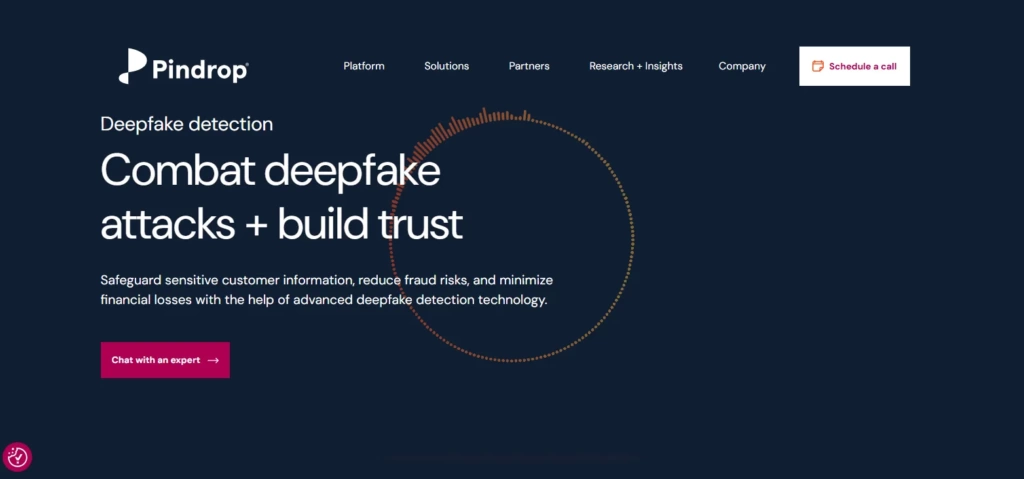
Pindrop is specialized in detecting AI-generated content in audio. It’s widely used in security systems to detect manipulated voice recordings (deepfakes).
Features:
- Detects fake or manipulated voice recordings.
- Analyzes voiceprints to verify authenticity.
- Offers real-time analysis, ideal for security purposes.
8. Truepic
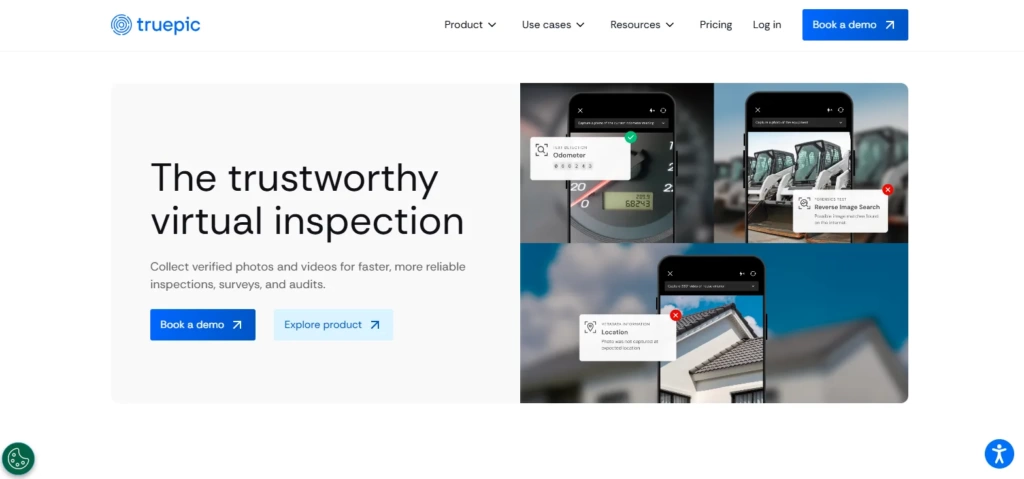
Truepic is another powerful AI content detector tool that validates images and videos. It ensures that the media you see hasn’t been altered or AI-generated, making it an important tool for journalists and legal professionals.
Features:
- Detects AI-generated media and manipulated images/videos.
- Uses a digital fingerprint to verify content authenticity.
- Helps prevent misinformation by verifying sources before publication.
Read More: Jasper AI Alternatives
9. Hugging Face’s AI Detector
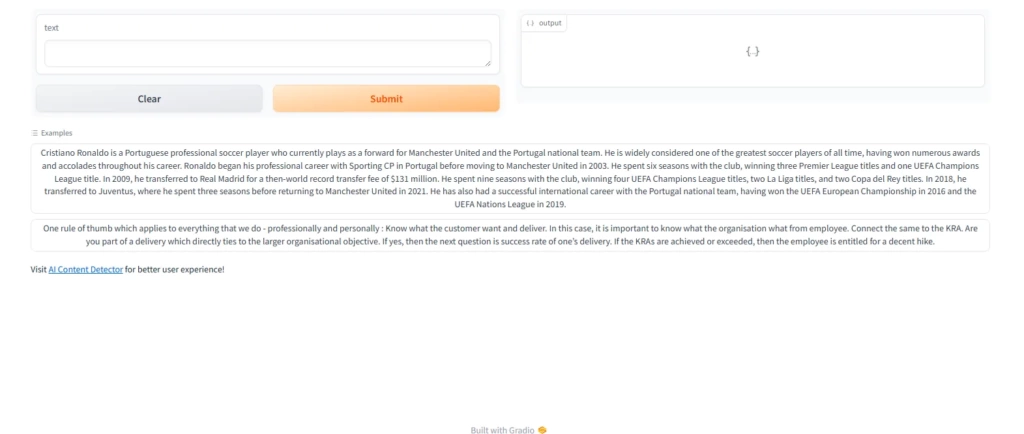
Hugging Face offers an AI-generated text detector that helps classify content. It’s popular among researchers and developers who need to distinguish between human-written and AI-written content. This tool is highly effective and fast.
Features:
- Detects AI-generated text like GPT-3 and GPT-4.
- Uses machine learning to analyze content characteristics.
- Easy API integration for developers working with AI-generated text.
10. OpenAI’s AI Text Classifier
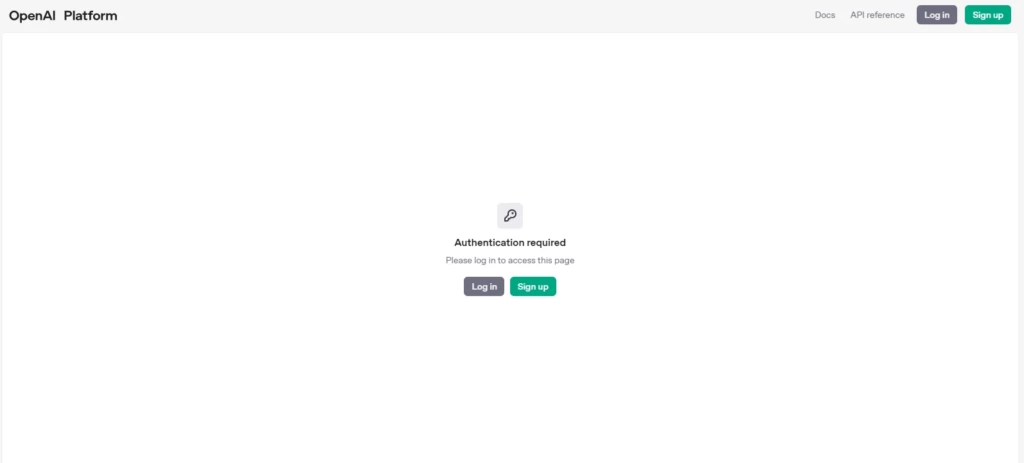
OpenAI’s AI text classifier is a simple tool to help you identify AI-written content. It’s specifically designed for content generated by OpenAI’s GPT models. You can quickly check if a text is AI-generated by analyzing a percentage score.
Features:
- Classifies content as human-written or AI-generated.
- Provides a percentage likelihood of AI authorship.
- Perfect for checking content generated by OpenAI’s GPT models.
Also Check: CopyAI Alternatives
11. Scribbr
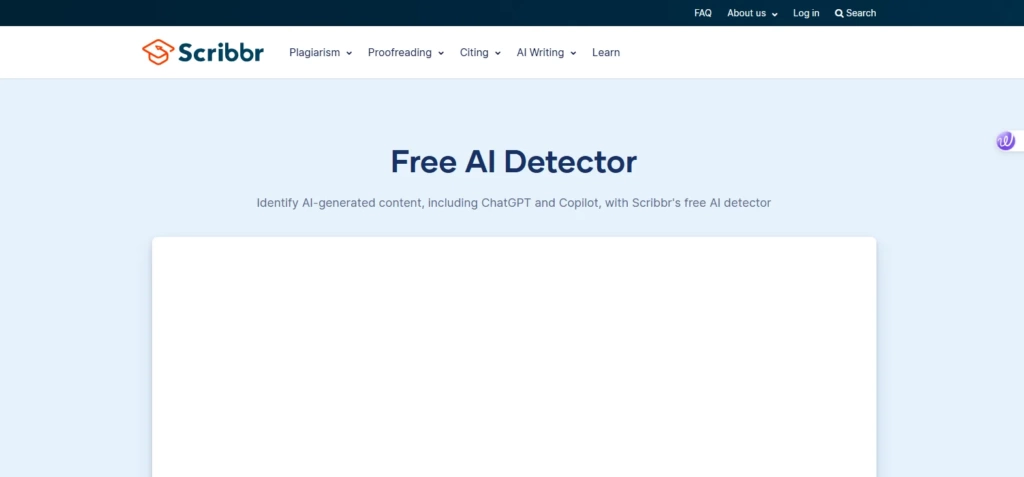
One of the most trusted AI content detectors is Scribbr. This tool helps you spot AI-generated text quickly, making it ideal for academic settings. It’s especially useful for students and researchers who need to verify the originality of their work.
Features:
- Detects AI-generated text using advanced algorithms.
- Offers a detailed report of AI content likelihood.
- Free version available for quick text checks.
12. Winston
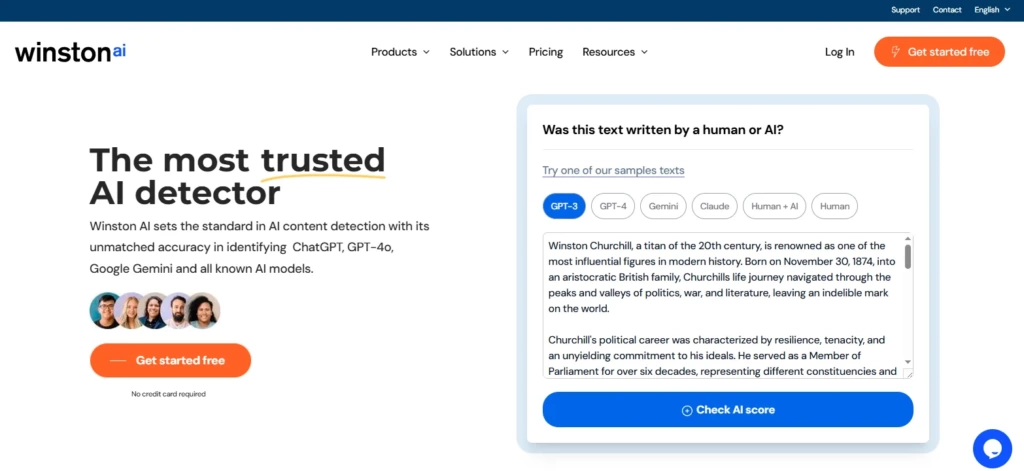
Winston is another top-rated AI content detector that helps identify AI-written content. Whether you’re working with long or short texts, Winston’s AI technology will help you analyze text and spot unnatural writing patterns.
Features:
- Analyzes text to identify AI-generated content.
- Detects subtle inconsistencies and errors common in AI-written content.
- Provides an easy-to-use interface with quick results.
13. ZeroChatGPT
ZeroChatGPT is a cutting-edge AI content detector that specializes in detecting content created by GPT models. If you’re looking for an efficient AI-generated text detector, this tool is highly recommended for its accuracy and ease of use.
Features:
- Detects AI-generated text from GPT models like GPT-3 and GPT-4.
- Provides a probability score for identifying AI-written content.
- Helps you ensure authenticity and originality in your work.
Don’t Miss: AI Website Creators
14. Sappling
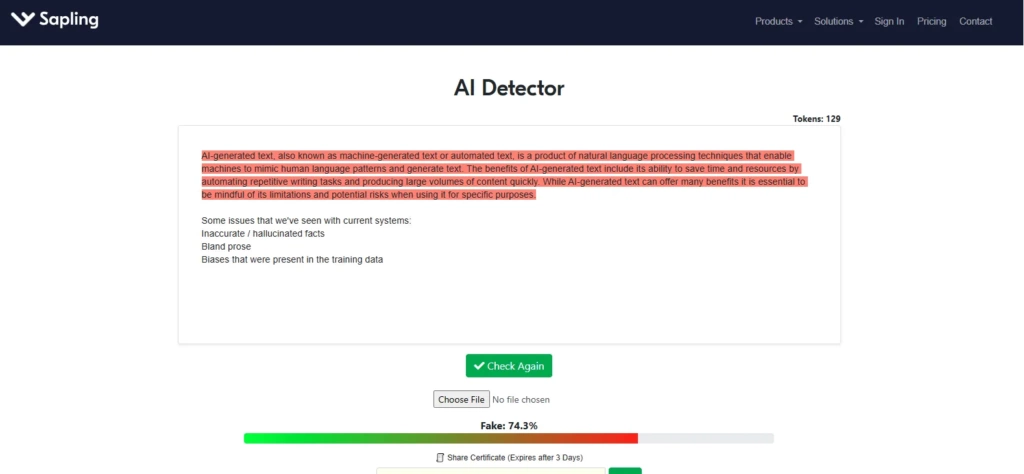
Sappling is another AI content detector tool designed for businesses and organizations. It helps detect AI-generated content, ensuring that any marketing materials, blogs, or reports are authentic and written by humans.
Features:
- Detects AI-generated content and identifies specific AI writing patterns.
- Offers a fast and accurate detection process.
- Ideal for businesses to ensure content authenticity.
Conclusion
If you need an authentic response to your post, content, or anything else. Then you need to choose the right AI content detector. Because it is essential for ensuring the ”reality” of your content. Whatever content you’re providing should be real, without any AI-generated content. These tools help you detect AI-generated text across different mediums, ensuring that your content is original and trustworthy. Whether you’re in education, business, or the media, using these AI content detectors will help you maintain content integrity and avoid plagiarism.

